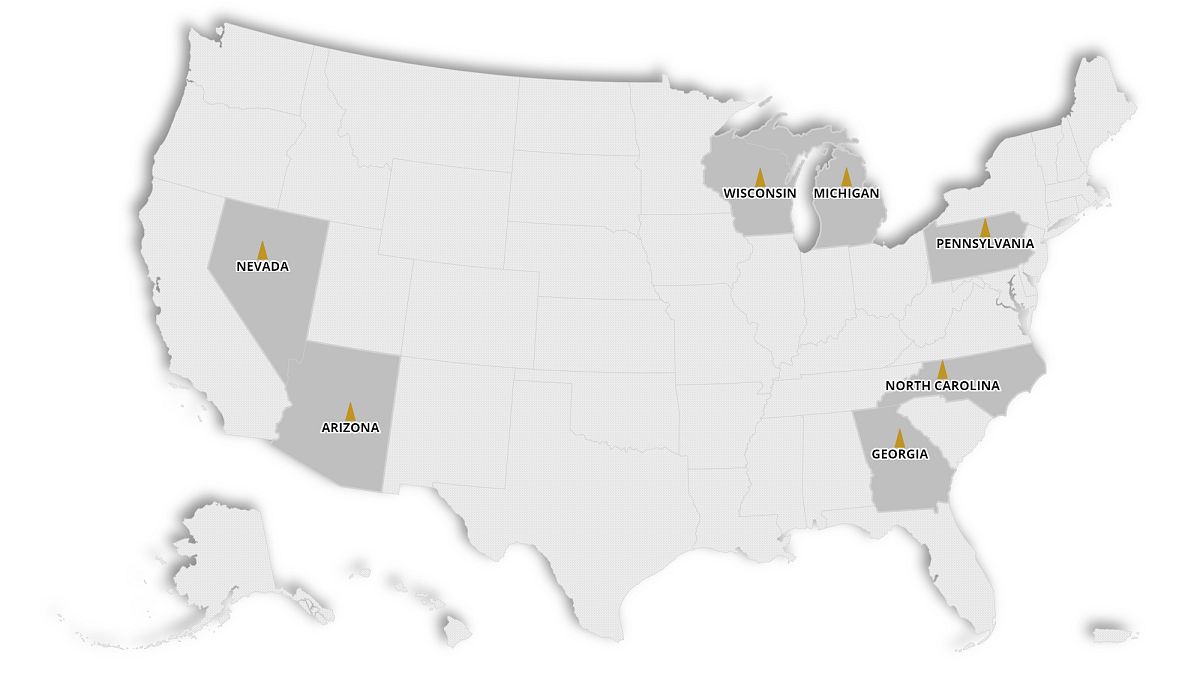The upcoming US presidential election on November 5th is expected to be a close battle between Vice President Kamala Harris and former President Donald Trump, especially in key swing states. With the US’s Electoral College system, each state is allocated a certain number of Electoral College votes, and a candidate needs to secure at least 270 votes to win. The campaigns of both candidates are heavily focused on seven critical battleground states: Arizona, Georgia, Michigan, Nevada, Pennsylvania, North Carolina, and Wisconsin.
In these battleground states, Harris and Trump are intensifying their efforts as they vie for the Electoral College votes that could put them over the winning threshold. If the remaining 43 states follow the predictions as “solid”, “leaning”, or “likely” wins for each candidate, the election will ultimately be decided by the outcomes in these seven toss-up states. Together, these states hold 93 of the total 538 Electoral College votes available.
For Harris to secure a victory, she would need to win at least 44 of these votes, while Trump would need to secure 51. It is crucial for both candidates to focus their campaigns on these swing states and convince undecided voters in order to secure the necessary Electoral College votes to win the election. Understanding the importance of winning these battleground states, both campaigns are putting in significant efforts to reach out to voters and sway their opinions in their favor.
In the 2016 election, Hillary Clinton lost to Trump by failing to secure key states like Wisconsin, Michigan, and Pennsylvania. However, in the 2020 election, Joe Biden was able to reverse Clinton’s loss by winning all three states, as well as picking up Arizona, Georgia, and Nebraska’s second congressional district. These victories were crucial in Biden’s successful bid for the presidency, highlighting the significance of winning key swing states in the Electoral College system.
The battle between Harris and Trump in the upcoming presidential election underscores the unique dynamics of the US electoral system. With the focus on a handful of crucial battleground states, the candidates need to strategically allocate resources and prioritize their campaigns to secure the necessary Electoral College votes for victory. As the election approaches, all eyes will be on the outcomes in these key swing states, as they have the potential to determine the next President of the United States.
In conclusion, the upcoming US presidential election is shaping up to be a tight race between Kamala Harris and Donald Trump, with the outcome likely to hinge on the results in key battleground states. As both candidates intensify their efforts in these crucial states, the Electoral College system adds an extra layer of complexity to the election process. With the focus on securing the necessary votes to win, the campaigns of Harris and Trump are centered on convincing undecided voters and winning over key swing states. Ultimately, the results in these battleground states will play a significant role in determining the next President of the United States.










